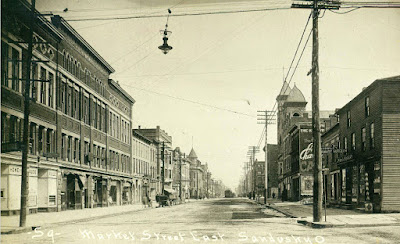The football team at Sandusky High School is having a successful season this year -- just a few days from a second-round playoff game, at the time this was published. This has been one of many good years for SHS football over the past 120 or so years.
Sandusky students played their first football games in the 1890s, but it appears that these teams were at more of a club-level rather than varsity, playing whatever nearby teams were available; records of those games are not readily available. What we might call varsity football began in 1901, when the team pictured above defeated Norwalk and Cleveland West High Schools, while losing to Toledo Scott in a three-game season. Judging from the picture, they may have been a somewhat disorganized bunch, with no standard uniforms.
Sandusky's first undefeated football season was in 1906, when the team won five games without allowing a single point!
The 1930s was a great time for Sandusky football, with winning records every year, including five undefeated seasons. The remodeled and expanded stadium (Strobel Field) was dedicated in 1936.
Many still remember the "Sensational 60's," when Sandusky football seemed nearly unbeatable, and produced future stars in both the playing and coaching ranks, as well as politics and other professions.
Do you recognize number 75 in the picture below? He is Sandusky's Pro Football Hall of Famer Orlando Pace, with his 1991 Junior Varsity squad.
Good luck to the Sandusky High School football team!

 this blog
this blog






























